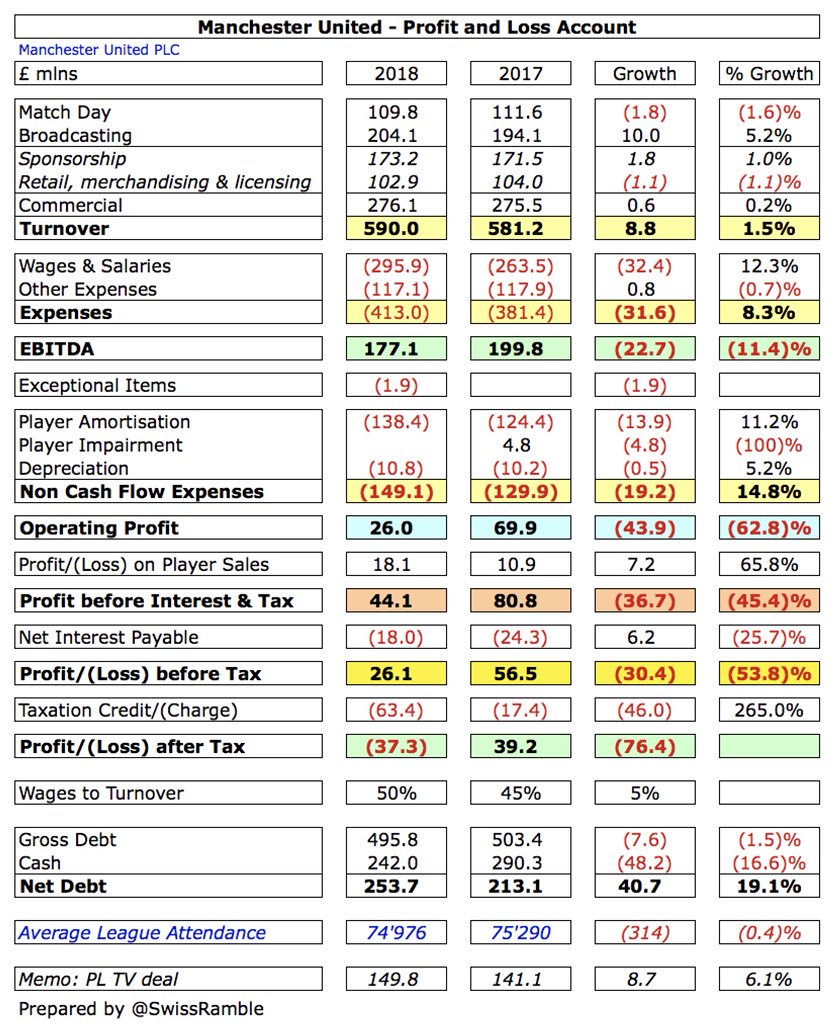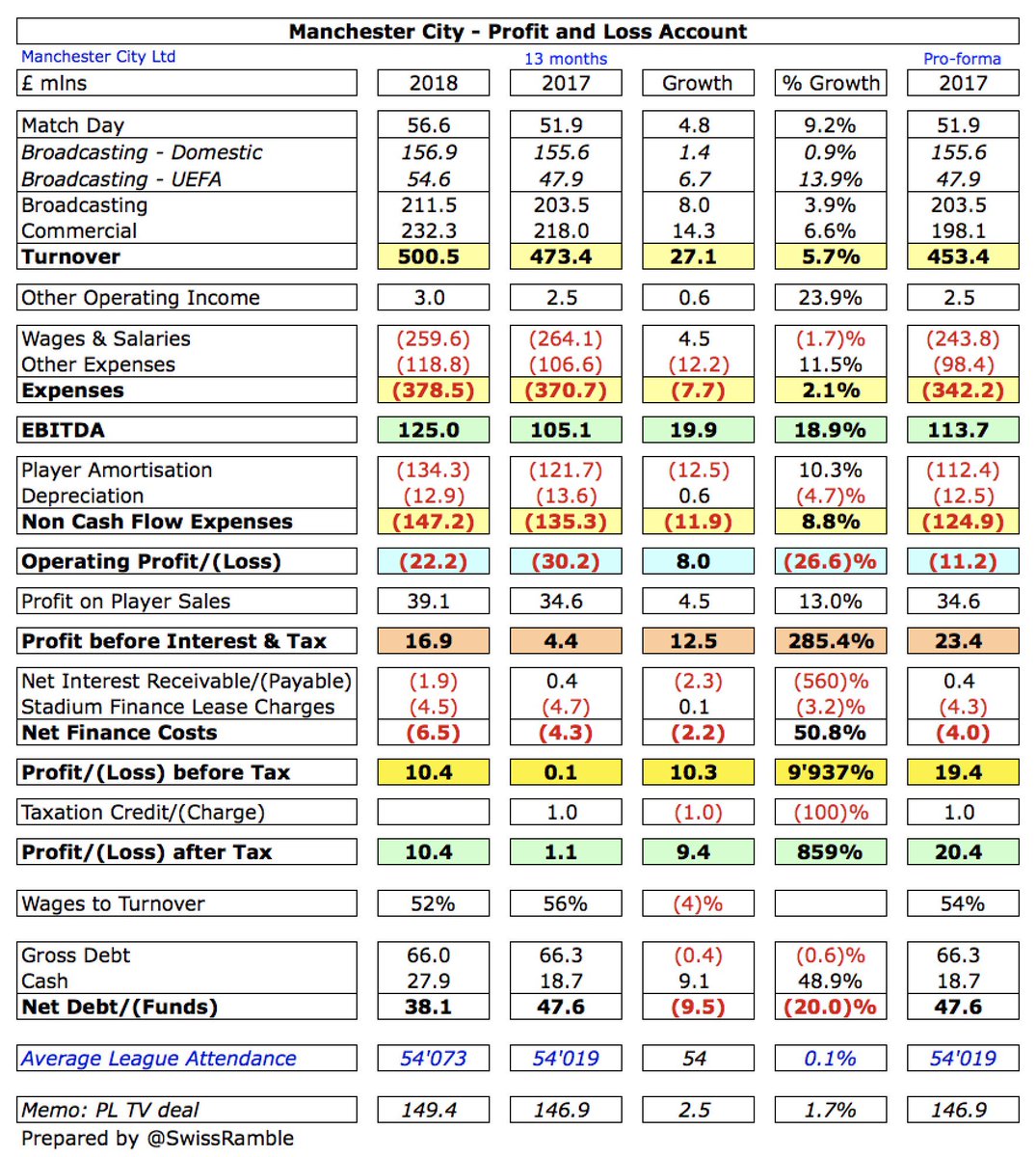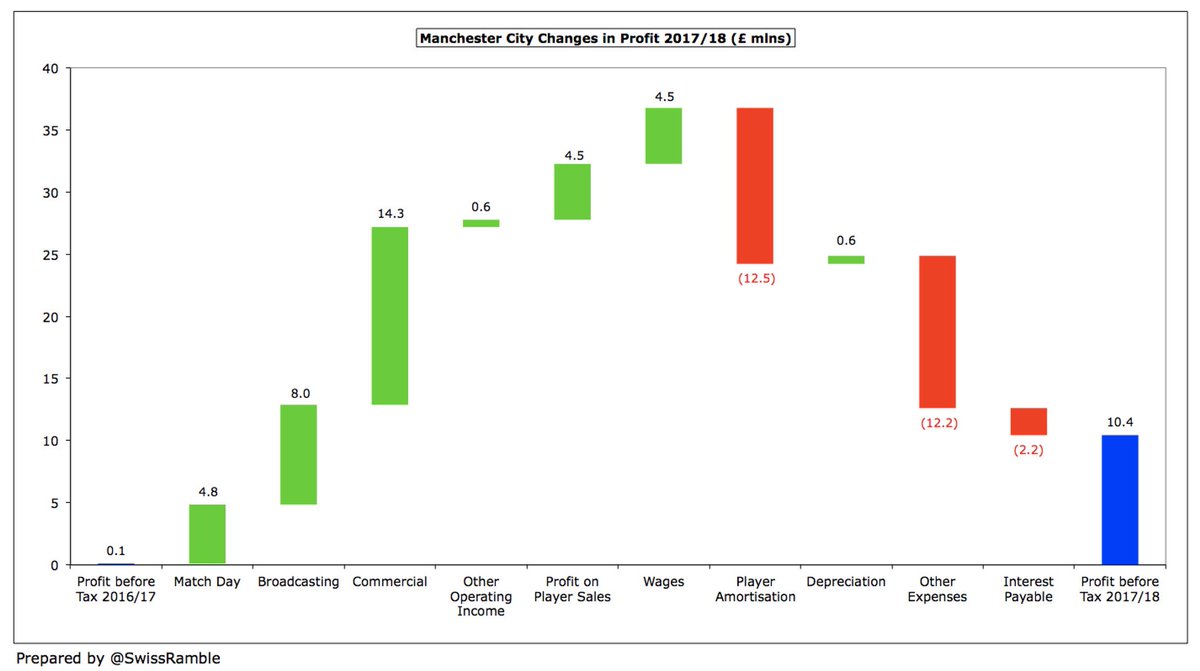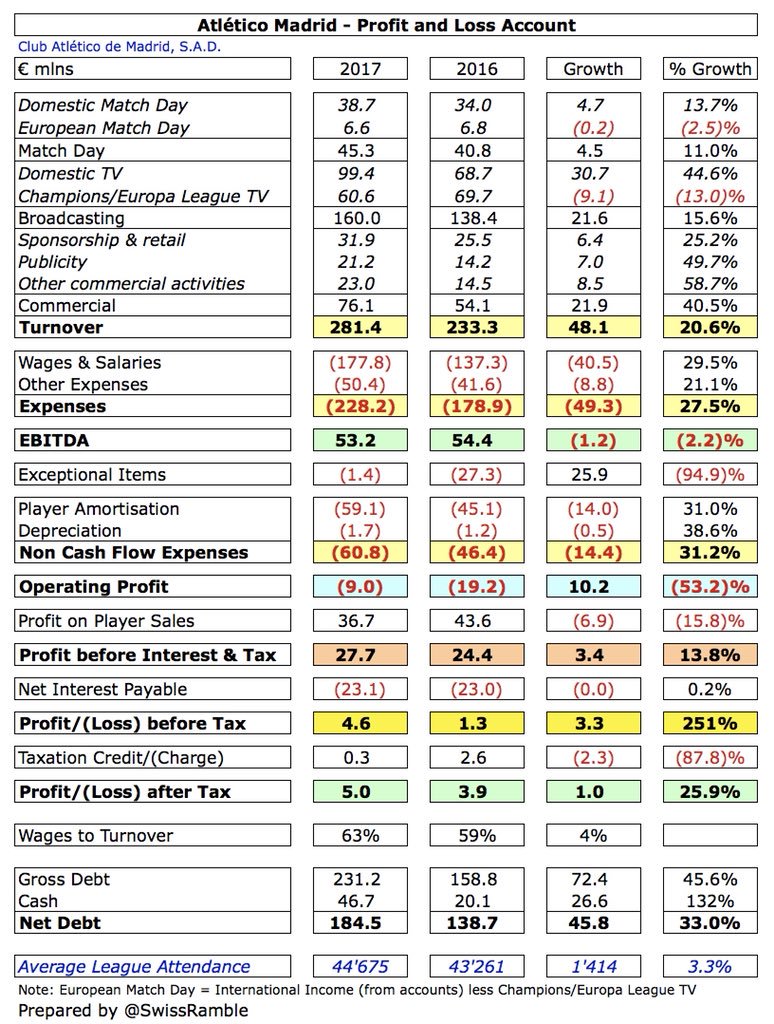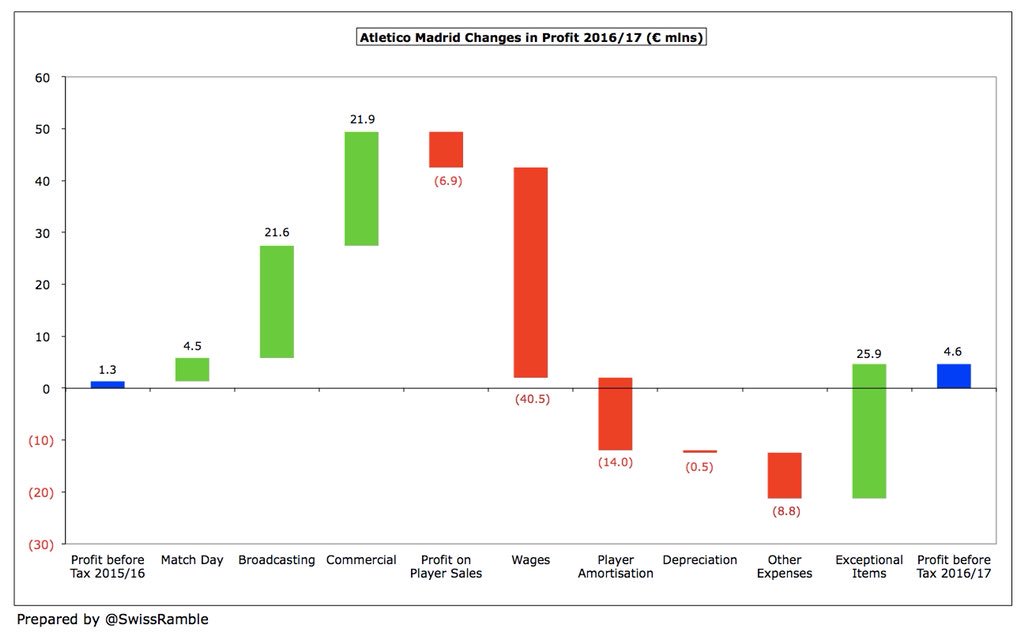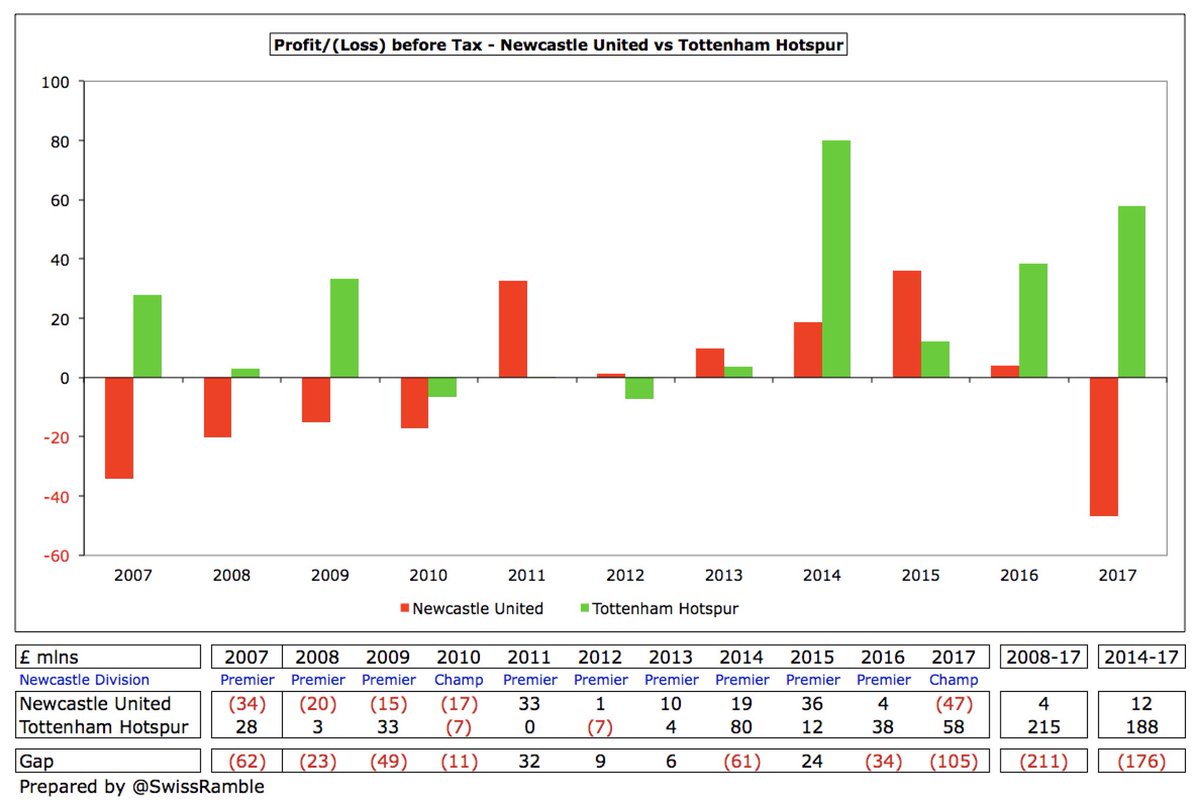Although the 2016/17 financial results for the Premier League are now a season out-of-date, they are still the most recent published by the clubs, so I thought some comparisons might be interesting as we head into the 2017/18 season. Thread follows.
Thanks to a combination of the PL TV deal and FFP wage controls, almost all clubs are now profitable with only #SAFC reporting a loss. #LCFC led the way with £92m profit before tax, the highest ever made in the Premier League, followed by #THFC £58m, #MUFC £57m and #AFC £45m. 

Profit on player sales is an increasingly important element in driving the improved profitability of some Premier League clubs. In 2016/17 highest profits were made by Chelsea £69m (Oscar to Shanghai SIPG), Everton £52m (Stones to #MCFC) and Southampton £42m (Mané to #LFC). 

Player trading is a key part of strategy at #CFC and #THFC, who have made £239m and £219m respectively from this activity in the last 5 years. Other members of the Big Six made much less: #LFC £123m, #AFC £92m, #MCFC £74m & #MUFC £41m. Worth noting #SaintsFC £148m and #EFC £107m. 

That said, all clubs reported positive EBITDA (Earnings Before Interest, Tax, Depreciation & Amortisation), which can be considered a proxy for cash operating profit, as it strips out player sales and once-off items. #MUFC are way ahead here with an astonishing £200m. 
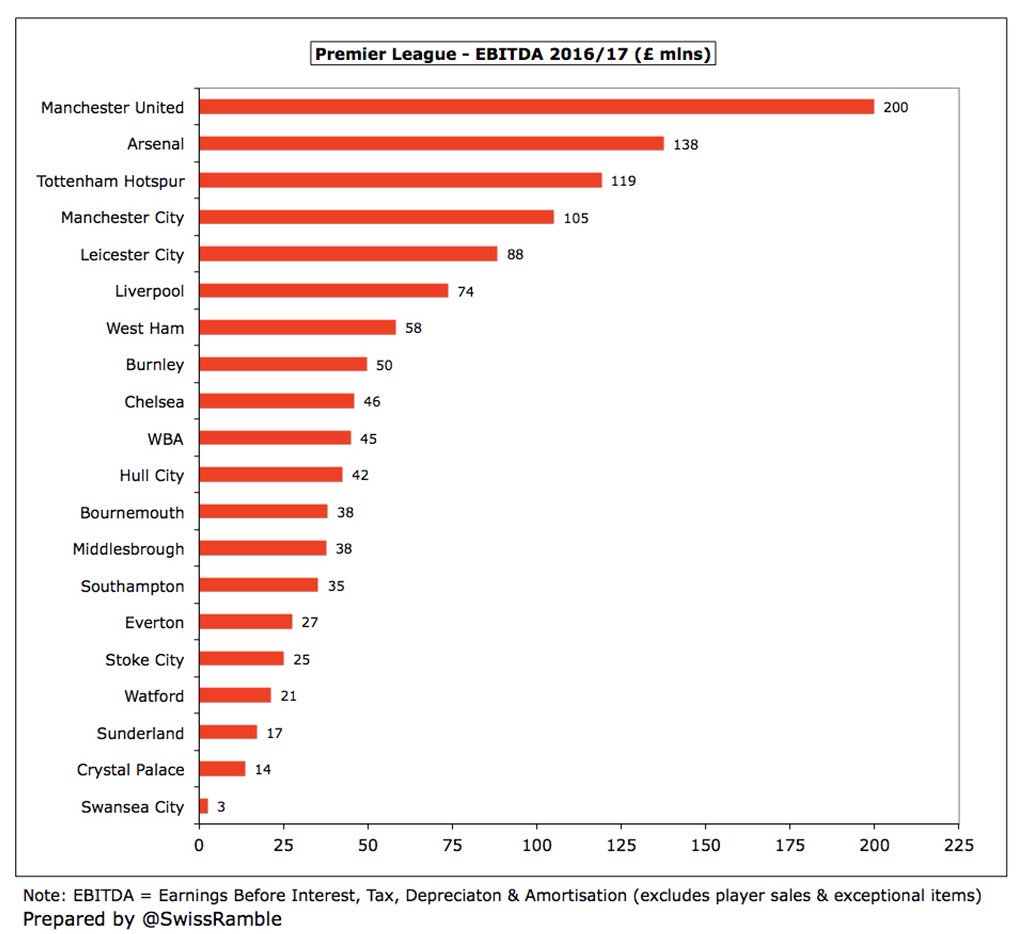
Despite the relative equality of Premier League TV money distribution, there is still a big gap in revenue terms between the Big Six (£2.5 bln) and other 14 clubs (£2.1 bln). Highest revenue: #MUFC £581m, #MCFC £473m, #AFC £423m, #LFC £364m, #CFC £361m and #THFC £306m. 

There are no fewer than 14 Premier League clubs in the Deloitte Money League Top 30 with #MUFC £581m being the highest revenue in world football, just ahead of Real Madrid £580m, Barcelona £557m and Bayern £505m. Note that #MCFC estimated as £453m, as accounts covered 13 months. 

Significant revenue growth for Big Six in last 5 years with highest at #MUFC, who increased revenue by £261m from £320m to £581m. Highest % growth at #THFC, who more than doubled revenue from £144m to £306m. Lowest growth at #CFC £104m, partly due to not qualifying for Europe. 

Compared to the previous season 2015/16, all Premier League clubs managed to increase their revenue. The highest growth came from #LCFC £104m and #THFC £97m, influenced by their Champions League qualification. 

Main driver of year-on-year revenue growth in 2016/17 was the benefit accruing from the first year of the new Premier League TV deal, though European TV money (helped by strengthening Euro) also played a part. Excluding these factors, most clubs had small or no revenue growth. 

#MCFC had the highest broadcasting income of £203m, boosted by £43m from the Champions League. European TV money can have a major impact here, as seen with #LCFC, who were 4th highest with £191m that included £70m from reaching CL quarter-finals. 

#CFC received most from Premier League TV deal with £151m, while last placed #SAFC still got £93m. Despite finishing 2nd in the league, #THFC only had 4th highest TV money, due to only being broadcast live 25 times (compared to 3rd place #MCFC 28 and 4th place #LFC 29). 

#LCFC received £70m for reaching Champions League quarter-finals, only below Juventus’ £95m, but more than winners Real Madrid, thanks to the high English TV pool. Other English clubs in CL: #AFC £55m, #MCFC £43m, & #THFC £37m. #MUFC got a healthy £38m for winning Europa League. 

No fewer than 13 of the 20 Premier League clubs generate more than 75% of their revenue from TV with #AFCB “leading the way” with an amazing 91%. 
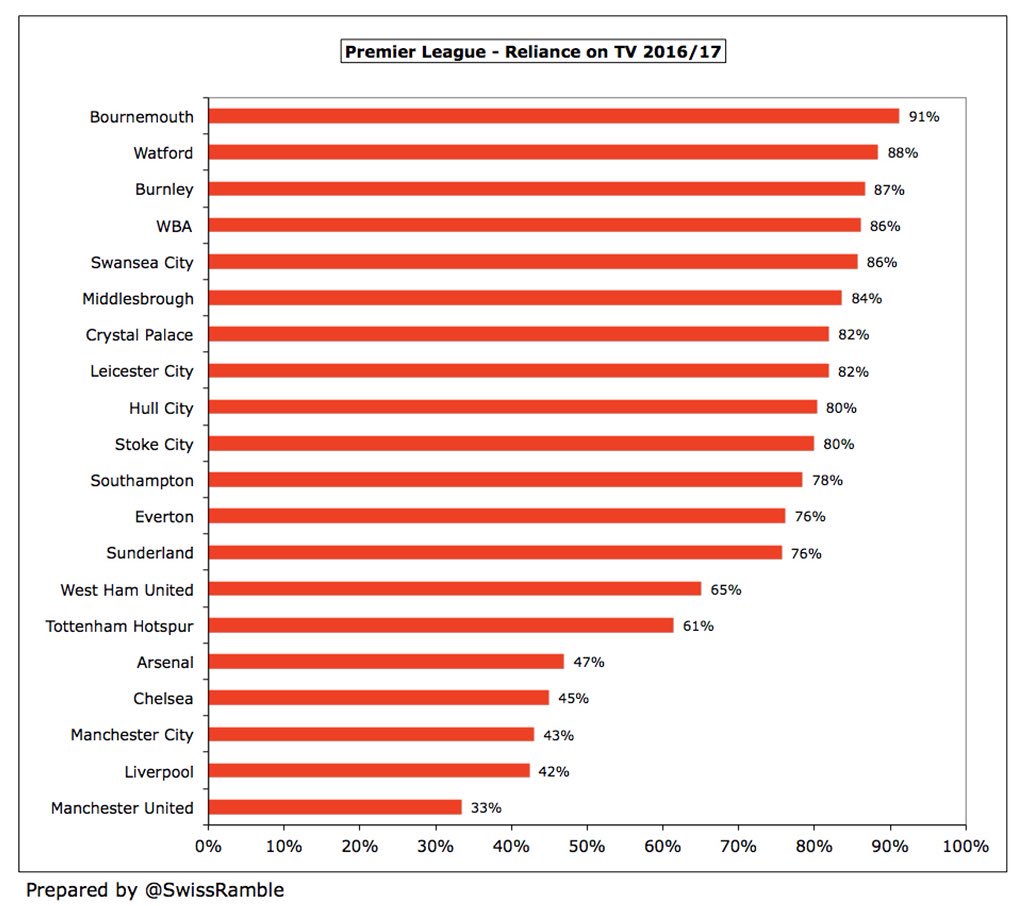
There is a vast difference between commercial income in the top flight: #MUFC earn an incredible £276m, while 13 clubs only earn between £6m and £27m, i.e. less than 10% of United. Next highest is #MCFC £218m, followed by #LFC £136m, #CFC £133m, #AFC £117m and #THFC £73m. 

Similarly, there is a large disparity in match day income with #MUFC (£112m) and #AFC both earning more than £100m, while 8 clubs generate less than £10m with #AFCB having to get by on just £5m. 

#MUFC enjoyed the highest average attendance of around 75,000, followed by #AFC 60,000, #WHUFC 57,000 (after move to the Olympic Stadium), #MCFC 54,000 and #LFC 53,000 (after main stand expansion). 

#MUFC and #MCFC wage bills rose to £264m in 2016/17 (though City’s figures cover 13 months, due to a change in their accounting close), creating a sizeable gap to #CFC £220m, #LFC £208m & #AFC £199m, then another large drop to #THFC £127m. #LCFC 7th with £113m, due to CL bonuses. 

Five years ago #MUFC only had 3rd highest wage bill, behind #MCFC and #CFC, but are now highest following £102m (63%) growth. Worth noting that #MCFC wages impacted by transfer of some staff to other group companies (so cost reflected in higher external charges). 

Even if we pro-rate #MCFC wage bill from £264m (13 months) to £244m (12 months), this still represented the largest year-on-year growth over 2015/16 of £46m, followed by #LCFC £32m, #MUFC £31m and #CPFC £31m. Both #CFC and #LFC actually slightly reduced wages. 

Most clubs managed to lower their wages to turnover ratio in 2016/17, leaving 13 clubs in the 51% to 62% range. The highest (worst) ratio was 78% at #CPFC, followed by #Swans 77% (probably influenced by payouts to two sacked managers) and #SAFC 67%. 

The highest paid director was #THFC Daniel Levy, whose pay surged from £2.8m to £6.0m, far more than Ivan Gazidis (#AFC) & Ed Woodward (#MUFC), both £2.6m, though apparently this includes backdated pay rise & bonuses. Next highest was #CPFC, presumably Steve Parish, with £2.150m. 

The highest player amortisation, which is the annual charge to write-down transfer fees over the length of players’ contracts, was at #MUFC £124m & #MCFC £122m, reflecting their big spending in the transfer market. The next highest, #CFC £88m & #AFC £77m, were a fair way back. 

The highest player purchases were at #MUFC £205m and #MCFC £204m, almost twice as much as #AFC £114m and #CFC £106m. #CPFC were maybe surprisingly 5th highest with £104m. #AFCB £9m is misleading, as change in accounting date excluded July, i.e. £40m spent after accounts closed. 

Net transfer spend highlights 3 groups in Premier League: (1) above £100m – #MCFC, #MUFC & #AFC; (2) 13 clubs in a range of £20-40m; (3) break-even or smallish net sales – #SAFC, #HCAFC, #SaintsFC & #THFC. 

Despite all the financial restructurings, #MUFC still have by far the highest debt of £503m after Glazers leveraged buy-out, followed by #AFC £227m (Emirates stadium loan), #THFC £185m (mainly drawn against £400m facility for new stadium), #LFC £182m (mainly stadium expansion). 

The highest interest paid was £20m by #MUFC, then £12m by #AFC. #EFC £12m is a little misleading, as it included £7m for early settlement of old loans. As #THFC stadium debt increases, the interest payments will also rise significantly. 
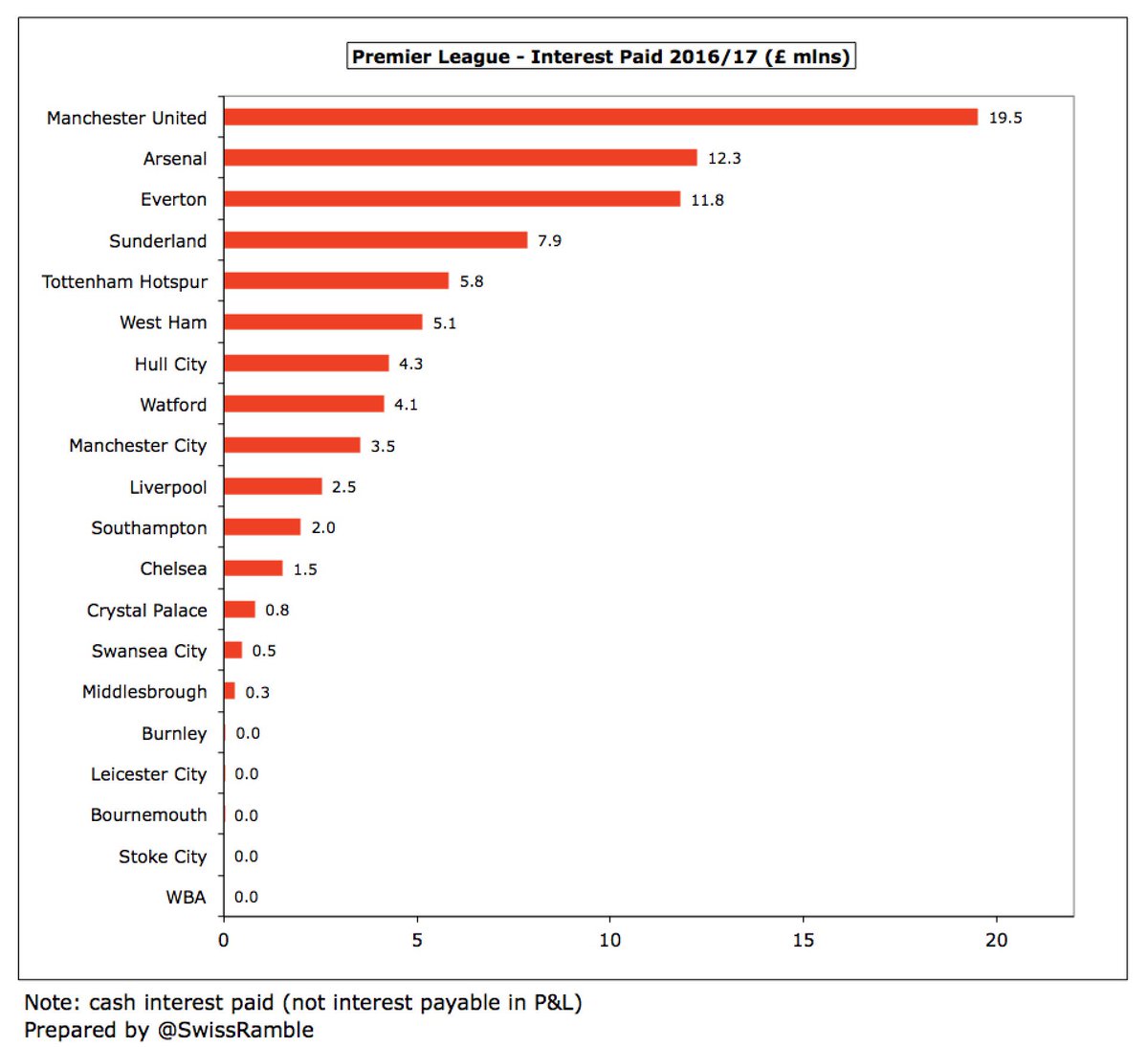
#MUFC also had an impressive £290m cash balance, followed by #THFC £200m, though this is partly due to loan advances for the new stadium development, and #AFC £180m. 
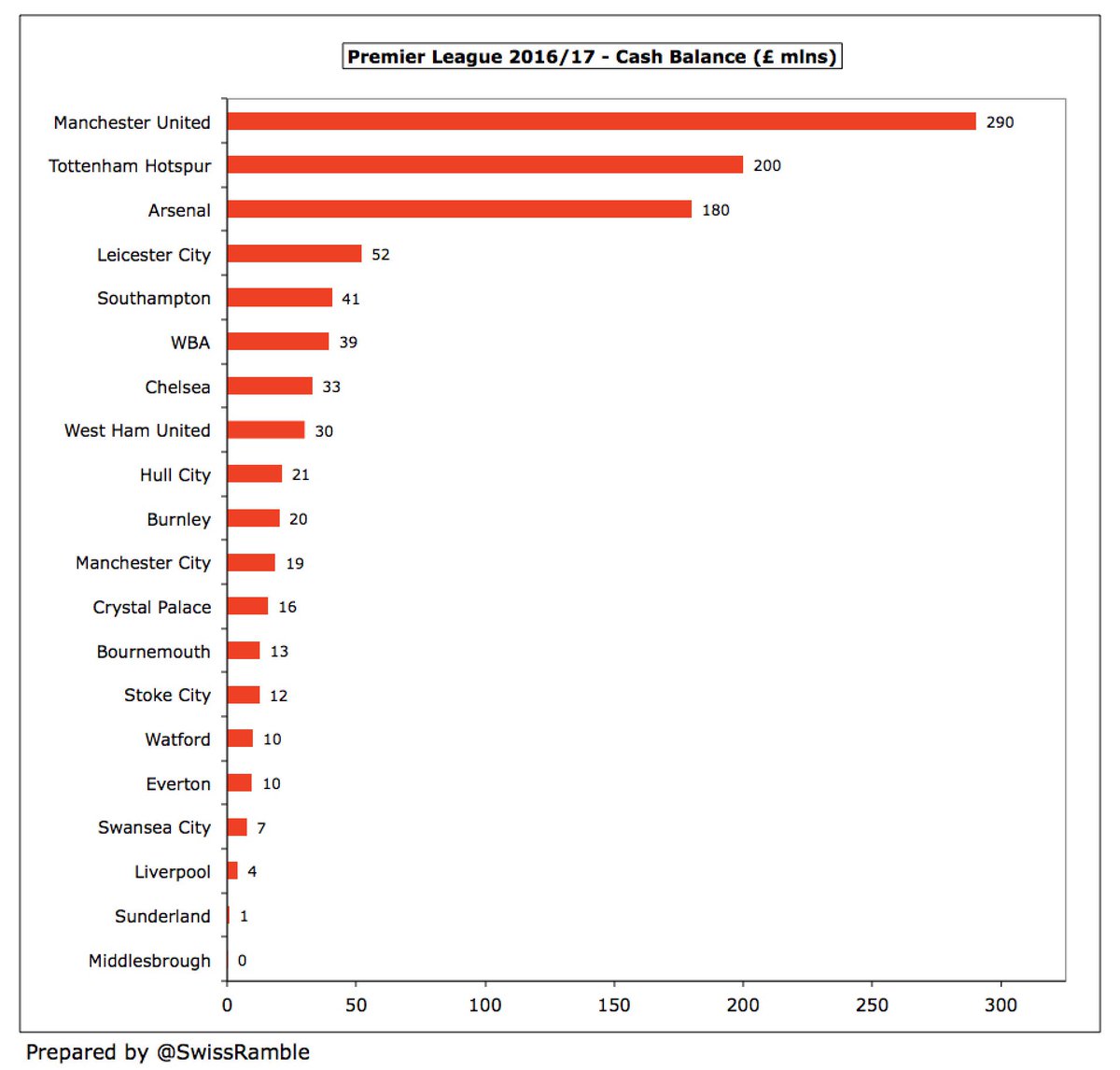
• • •
Missing some Tweet in this thread? You can try to
force a refresh




